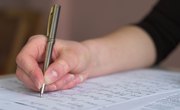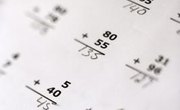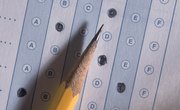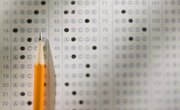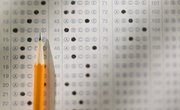Informal classroom assessment identifies a student’s progress, knowledge, performance and achievements through non-standardized procedures. These procedures can include essays, presentations, homework and experiments. Teachers can also simply observe or interview the students. This assessment is used to link students’ learning with teaching style. Checklists are used to measure students’ progress.
Characteristics
Informal research is dynamic, and it does more than test knowledge. It should be flexible so it can be used in a variety of situations. The research should be adaptable to different individuals. It must be continuous. Informal research should be based on processes and will measure the student’s progress in understanding and knowledge. It should take into consideration the typical development of a child so that the assessor can determine the child’s level of progress. Each stage and child will be assessed using the same scale, such as one to five or one to 10.
Academic
Adapt your checklist to any subject matter that you are teaching. The checklist should include details about the skill you are trying to assess. Identify what the students should know, what level they should be at, in order to determine your rating of each skill. Identify the level of performance and create multiple assessment opportunities. Determine the level you want the students to be performing the specific skill at. Divide the subject matter into key skills the students need to understand in order to master the subject you are assessing. Be clear about what you how and what you are assessing.
Behavioral
Checklists can also be created for student behavior. Identify to what level the students are on task and how they are working in groups. Determine if the students listen to instructions. Check if the students are squirming and fidgeting. Watch for students who leave their seats a lot or run around too much. Identify any difficulties they have playing quietly or remaining quiet during lessons. Watch the children to see how easily they make friends and if they are preoccupied. Identify problems the children have holding conversations.
Teaching
After assessing your students, you can also assess your teaching style. Identify how well the students mastered the subject matter you were teaching. List the types of assessments you performed to test the students. Check for teaching styles that did not work with the students as a whole or with individual students. Identify how each teaching style was received by the students. Determine how the students reacted to the different types of assessment, whether they were required to write papers, give presentations or work on homework and experiments. Create a checklist of details you can share with other teachers and administrators in your school about your progress, and get feedback from them.
Related Articles
References
Writer Bio
Rebekah Smith is a writer and editor from Montana and the owner of several businesses. Smith has consulted and worked with businesses in the fields of commercial greenhouses, ecommerce, technology and home improvement. She holds a Master of Business Administration and is working on a Ph.D. in business.




